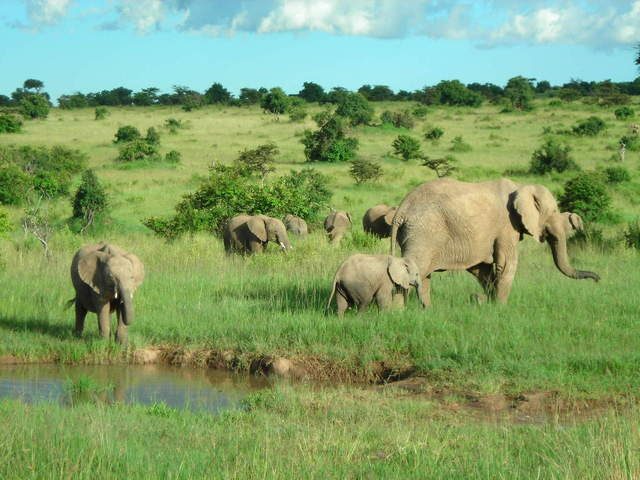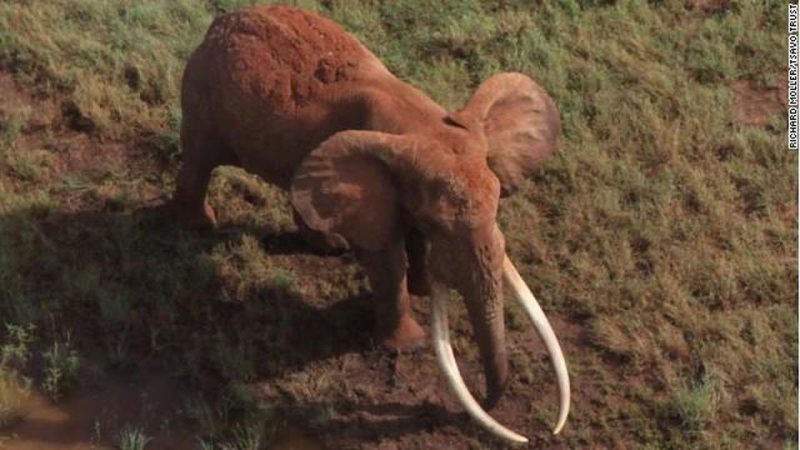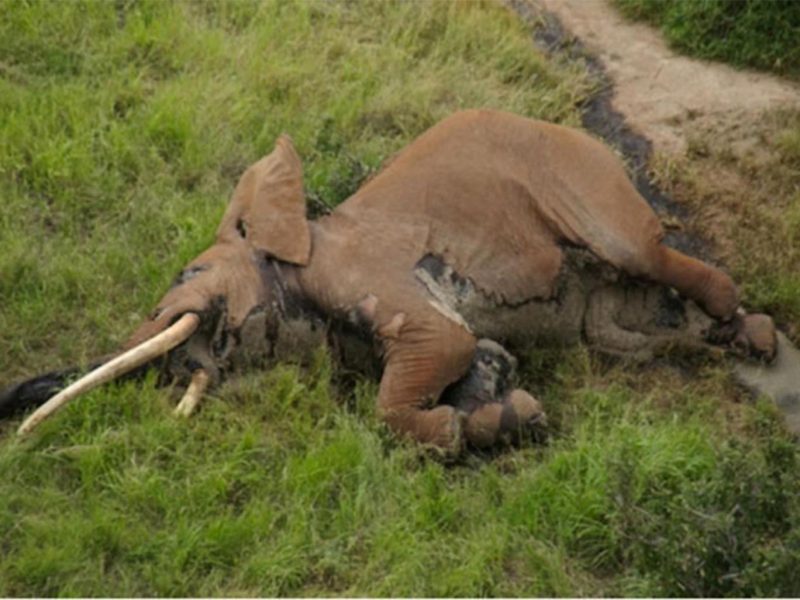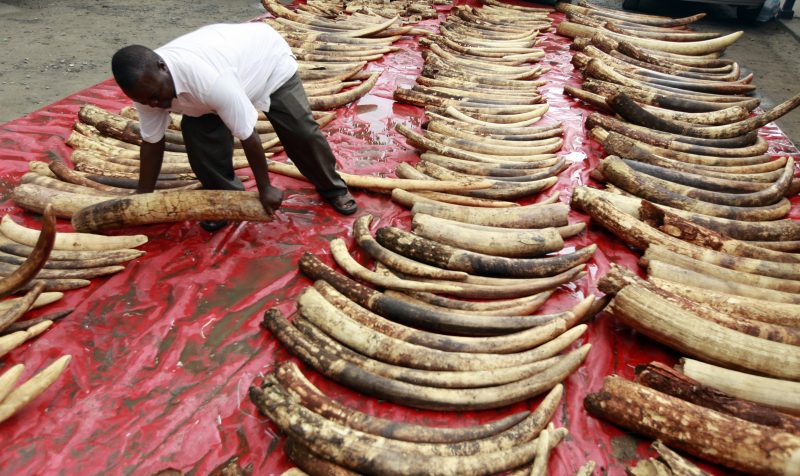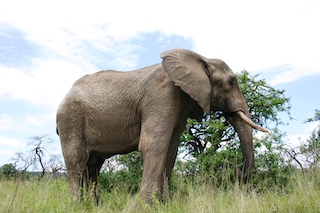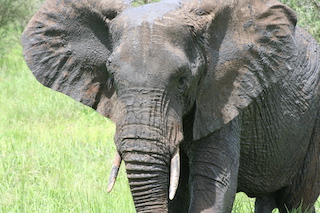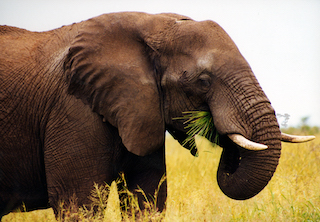Kenyan Elephants Poached For Ivory Trade
Once upon a time elephants roamed across most of Africa from the Mediterranean coast to the south. But they now occur in a much smaller range. The forest elephant occurs only in the dense forest of the equatorial rainforest of the Western and Central Africa. The savannah elephant occurs in southern and eastern Africa. The highest densities is in Botswana, Zimbabwe, Tanzania, Kenya, South Africa and Zambia.
Elephants in Kenya
The elephants in Kenya have lost over half of their range since 1979. There has also been massive poaching for trophies and ivory over the decades. A combination of loss of range and poaching has led to a significant drop in their population. A substantial elephant population in Kenya occurs in well-protected areas. But less than 20% of the habitat is under formal protection. Half of the area comprises the Tsavo conservation area. The Tsavo trust officers in collaboration with Kenya wildlife services monitor and patrol the area daily through ground and aerial reconnaissance and collect information about the elephants. Poachers are particularly possessive of the tuskers in this area.
Iconic giant tuskers
People call them giant tusker elephant because of their impressive, long, huge and cumbersome tusks, which weigh over 100lbs and almost scrape the ground. The giant tusker elephant is rare because it is a potentially attractive target for traders, who attack them for ivory. There are only around 25 of the giant tusker elephants in the world. Fifteen of them are in Kenya. But the two oldest members of the 15 tuskers in Kenya named Satao and his successor Satao II faced a terrible death which was a huge loss for Kenya. The country lost two of its iconic giant tuskers.
First tusker killed
The first iconic giant tusker died in May of 2014, which sent shockwaves around the world. It was a great loss for Kenya. The poachers killed the giant tusker for his tusks. He suffered a gruesome end. When rangers found his body, the perpetrators had hacked off his face and mutilated his body. It was so horrible that they had difficulty identifying him.
Implemented armed protection
As a consequence of the horrible death of the iconic tusker, conservationists at Kenya wildlife service petitioned Uhuru Kenyatta, the Kenyan President, to provide armed protection for the remaining tuskers. Armed guards would serve to deter poachers from killing the remaining giants. There is a precedent for this petition. Uhuru’s father, Jomo, the first president of Kenya, placed a tusker elephant named Ahmed with massive ivory under his protection by presidential decree.
Second tusker killed
The poachers slew the second iconic giant tusker in January 2017, in southern Kenya, less than three years after his predecessor. Although they found the body in January, the authorities only revealed it in March. The exact cause of death of Satao II is not yet confirmed but is suspected to have been struck with a poisoned arrow in a poaching incident while feeding in the Tsavo east national park. The conservation group, Tsavo trust, during a routine aerial surveillance of the park, were able to find the dead body by a river near the eastern border. The area is a hotspot for poaching.
Alleged perpetrators arrested
The authorities discovered the body before the poachers stripped the tusks and hence the animal’s enormous tusks were intact. One tusk weighed 50.5 kg and the other 51.5kg. It was the largest of the ten remaining giant tuskers in the Tsavo national park in Kenya. The elephant was 50 years old and was a beloved by visitors to the park where he roamed. The Tsavo wildlife conservation team followed the two poachers, allegedly responsible for the death, deep into the park and arrested them two weeks after they found the elephant’s carcass. They also recovered 12 poisoned arrows, three bows, and a rifle.
Poaching for ivory
Poachers slaughter the endangered and vulnerable elephants in Kenya for ivory every year, which is currently the biggest threat to elephants. It happens at a faster rate than they can produce. Elephant tusks are sold for thousands of dollars on the black market, making it a lucrative trade. The ivory is also used as trophies or carved into jewelry, ornaments, and trinkets. Sometimes, they also sell elephant skin and meat.
Asian ivory trade
In 1989, Cites introduced an international ban on ivory exports, and it allowed the population of elephants to recover, particularly because the wildlife authorities adequately protected them. Despite the ban, the demand persists, and they still poach elephants in huge numbers, which has led to steep declines in their numbers. The practice is motivated by demand in the Asian countries for ivory products coveted as a status symbol or for traditional medicine. China is the biggest market for such products.
Investment yield results
The factors that compound the elephant poaching problem are unmonitored ivory markets, weak law enforcement, insufficient anti-poaching capacity, and corruption. However, Kenya’s investment in anti-poaching, which include enforcement, punishment and prosecution have seen the country manage to increase the elephant population between 2007 and 2014, whereas Africa as a continent saw a 30% decline in the elephant numbers. On the global front, Kenya’s experience and historical knowledge about elephants place it in a leading position in its effort to save elephants from extinction. The country is also home to the longest running elephant studies. The dwindling elephant numbers in African countries will not stop until countries like Japan, Thailand, and China continue having a market for ivory. A renewed enthusiastic effort to deal with elephant poaching is required for that to happen.
5 Frequently Asked Questions About Elephants In Kenya
To receive a colourful digibook about elephant with videos, images and text, please fill out the following form or simply email us on safaris@safari-center.com

